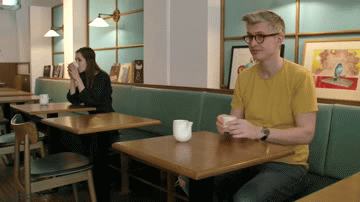Our Chemical-free Decaf Coffee
Have you ever tried caffeine-free (decaf) coffee and thought to yourself: “This doesn’t taste good”? Well, that’s because, unfortunately, most of the time, decaf coffee doesn’t taste that good.
How most coffee is decaffeinated
Most coffees, especially big-brand supermarket coffee, are decaffeinated by soaking the dried, unroasted coffee beans in chemicals that will bind themselves to the caffeine in the coffee bean. Back in the day, they used harsh chemical solvents such as benzene to remove the caffeine from the beans. They stopped using benzene when they found out it can cause cancer.
Today, they have multiple methods to remove caffeine, the most popular of which is to use the chemical ethyl acetate. Ethyl acetate can be made in a chemical plant from ethanol and acetic acid or it can be made from cane sugar plants. Ethyl acetate is also used in nail polish remover, sounds delicious right?
These chemicals do not only take away the caffeine in the coffee beans, but they will also affect the flavour of the coffee. What doesn’t help is that producers use lower-quality coffee beans for the decaffeination process in order to save costs.
Bad coffee by James Hoffmann
Mountain wATER Process
There are however two producers in the world that use a different method to produce decaf coffee beans. These producers are Swiss Water in Canada and Descamex in Mexico. Both of them use fresh mountain water instead of chemicals to decaffeinate the unroasted coffee.
“You won’t taste the difference, I promise you!”
How does this work?
They take a batch of high-quality, specialty, unroasted coffee and soak it in fresh water from the mountains. Because the concentration of flavours and caffeine in the water is zero, these substances will move from the coffee to the water until both have an equal concentration. They run the coffee-flavoured, caffeinated water through carbon filters that take out the caffeine but keep the flavour compounds in the water. The first batch of unroasted coffee beans will be removed and recycled and a new batch of unroasted coffee beans will be put in the flavoured water.
Now, because the water contains as many flavour compounds as the unroasted coffee beans, only the caffeine will come out of the beans into the water until both contain an equal concentration of caffeine. The water is filtered through the carbon filters and, free from caffeine but still full of flavour, added to the same batch of unroasted coffee. This process is repeated over and over again until there is no more caffeine (less than 0,1%) left in the batch of unroasted coffee beans.
The result is a decaf coffee that still contains all the original flavours of its caffeinated counterpart. You won’t taste the difference, I promise you!



